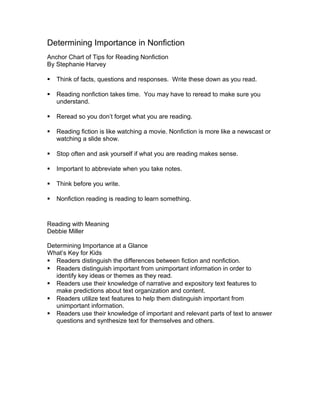This document provides guidance and examples for teaching students to determine importance when reading nonfiction texts. It emphasizes that nonfiction requires distinguishing key ideas from unimportant details in order to learn. Teachers should help students learn to use text features and structure to identify what is essential. Examples include having students take notes using three-column charts to record topics, details, and personal responses. The document also provides examples of "wonder questions" students can research to learn more about a topic.









